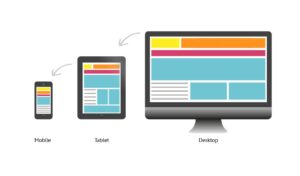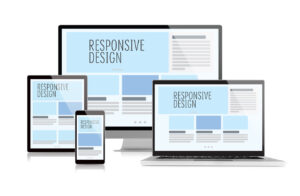In today’s digitally-driven world, the way we access and consume information is constantly evolving. As we swiftly transition between desktops, tablets, and smartphones, the need for websites to provide an optimal viewing experience across all these devices becomes paramount. This is where responsive web design (RWD) steps in, especially for event websites. If you need assistance with Web Design in Asheville, NC call these professionals!
Why is Responsive Design Crucial for Event Websites?
- Diverse Audience Access Points: Attendees, sponsors, speakers, and even organizers access event websites from different devices. Whether someone is browsing on a lunch break via mobile or researching speakers from a laptop at home, the experience should remain consistent and user-friendly.
- First Impressions Matter: For many, an event website is the first point of contact. A responsive design ensures that first impression is a strong one, irrespective of the device used.
- Enhanced User Experience: A responsive site means no more pinching, zooming, or scrolling horizontally. Information is easily accessible, leading to higher user satisfaction and more ticket sales or registrations.
- SEO Advantages: Google has made it clear that it prefers mobile-friendly websites, which means a responsive event website can rank higher in search results, increasing visibility and traffic.
Key Features of a Responsive Event Website:
- Fluid Grids: This involves designing elements in relative units like percentages, rather than fixed units like pixels, ensuring elements resize in relation to one another.
- Flexible Images: Images resize within the containing elements, ensuring they don’t spill out or distort the layout.
- Media Queries: These are used to apply styles based on the device characteristics, like its resolution.
Tips to Ensure Your Event Website is Truly Responsive:
- Test on Multiple Devices: Don’t rely solely on browser resizing. Check your website on actual devices – smartphones, tablets, and desktops of different sizes and resolutions.
- Prioritize Essential Information: Not everything on the desktop version needs to be on mobile. Prioritize what’s crucial like event dates, venue, registration links, and speaker information.
- Optimize for Touch: On touch devices, buttons should be appropriately sized and spaced to prevent accidental clicks.
- Be Mindful of Load Times: Mobile users might be on slower connections. Optimize images and use tools like Google’s PageSpeed Insights to identify areas for improvement.
- Stay Updated: As devices and screen sizes change, regularly update and test your site to ensure compatibility.
Wrapping Up
In an era where user experience is king, ensuring your event website is responsive is not just a luxury, but a necessity. It reflects professionalism, enhances user engagement, and ensures your message reaches your audience the way you intended. So, if you’re in the early stages of planning or redesigning your event website, make sure responsive design is at the top of your checklist.



